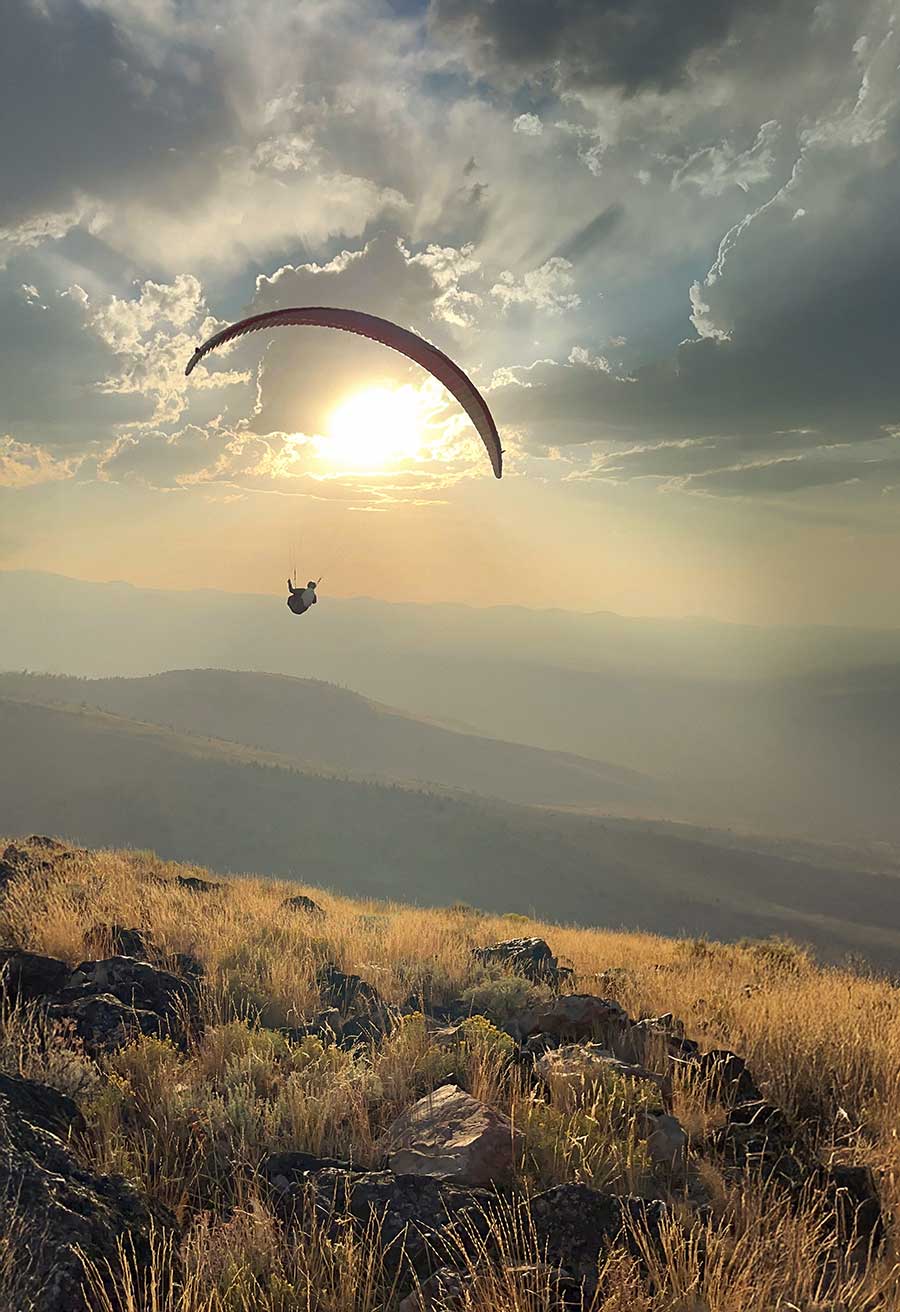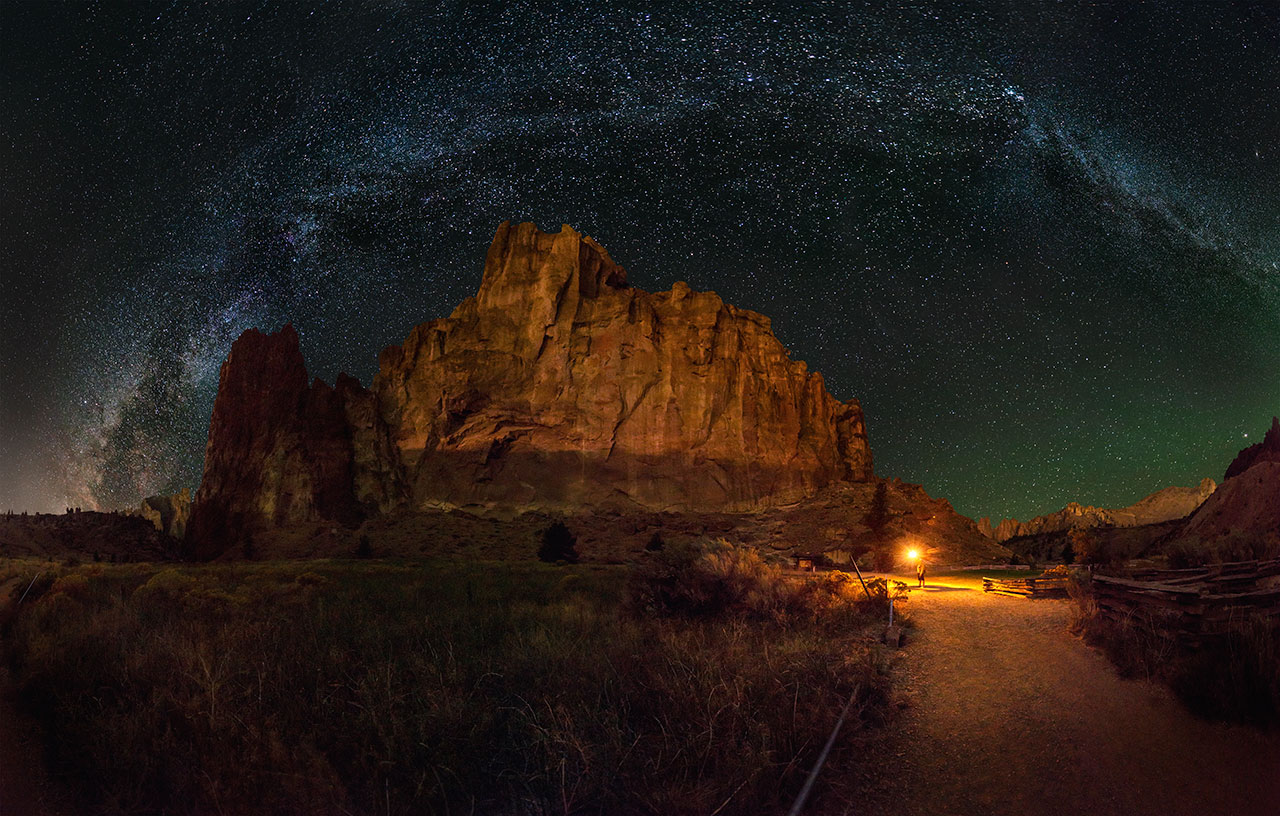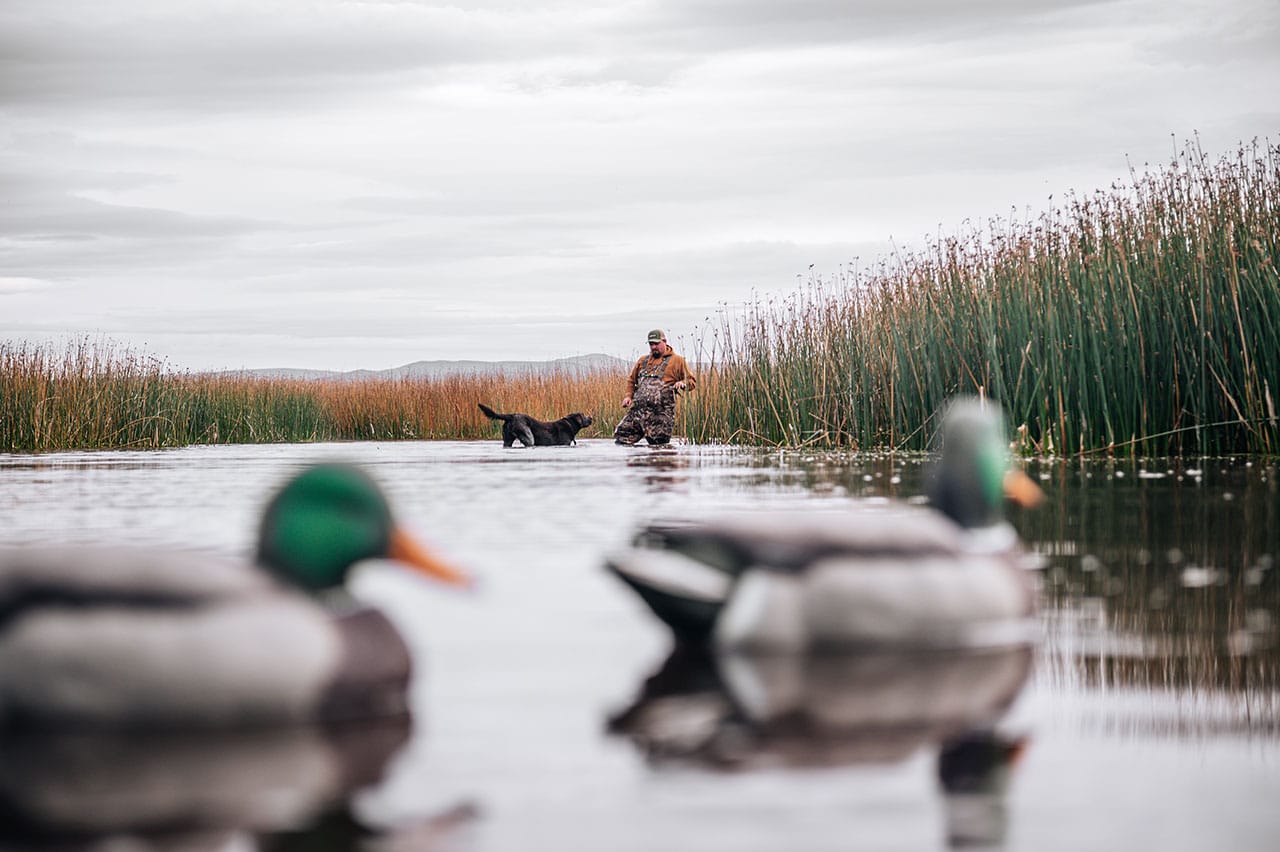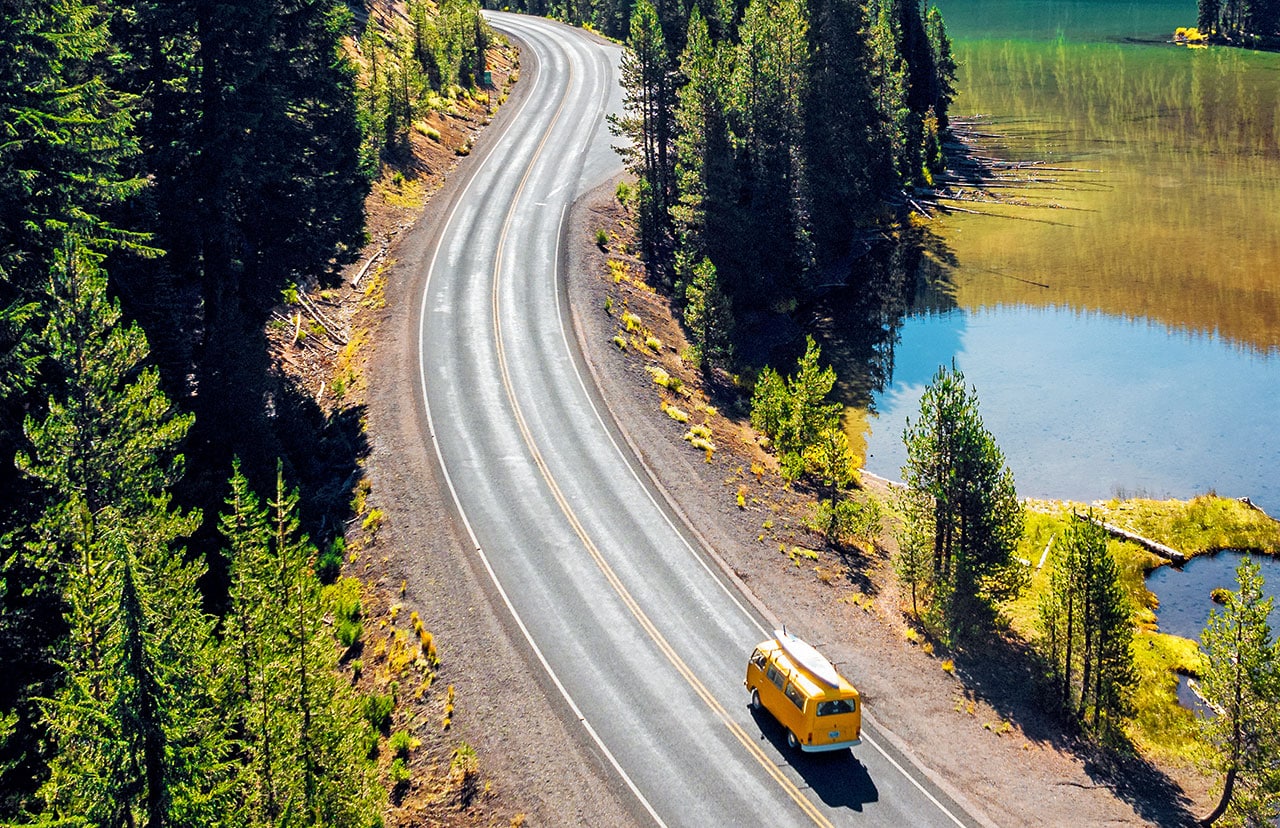Rent a mountain bike in Bend and you’ll likely find these guidelines on a sticker attached to the top bar of your bike. The rental bike stickers were designed and distributed by the Central Oregon Trail Alliance as a positive way to encourage trail etiquette among bikers new to the trails, according to Emmy Andrews, executive director of COTA.
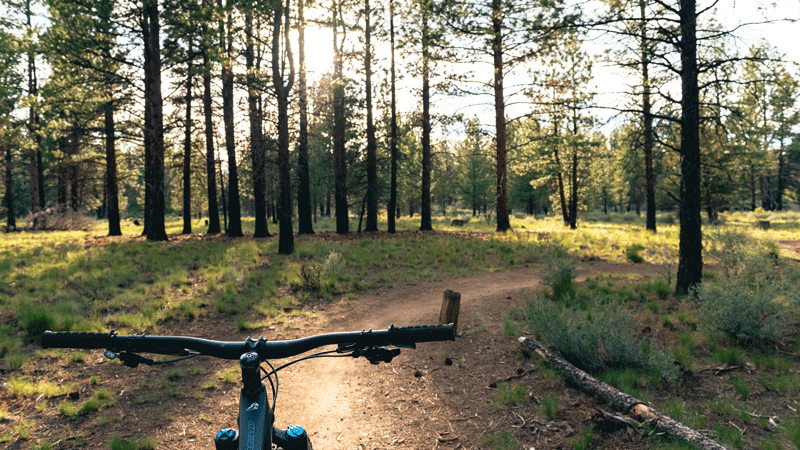
“We want riders to know that Bend’s bike culture is friendly and helpful. The stickers communicate that message so everyone can have a good time,” Andrews said.
COTA’s rental bike stickers are one small example of a new approach to outdoor adventure and travel. Instead of tourism that drains local resources and pushes community members aside, this mindset encourages visitors to make a positive impact on their vacation destination. It’s called regenerative travel, and it’s making tourism better in Bend—for both visitors and locals.
TRAILHEAD TOURISM
Bend locals have long shared a passion for nature, and want others to experience it, too. Yet as tourism has grown, the influx of summer visitors deflates even the most enthusiastic Bendite. Our favorite places are being loved to death. Multitudes of hikers erode the trails; trailhead parking lots overflow with vehicles. Riverbanks are cluttered with trash; bikers conflict with horseback riders and backpackers. Solitude is difficult to find; adventuring has evolved into crowd management.
Can tourism in Bend continue at this pace without ruining the health of the ecosystem and the spirit of the community?
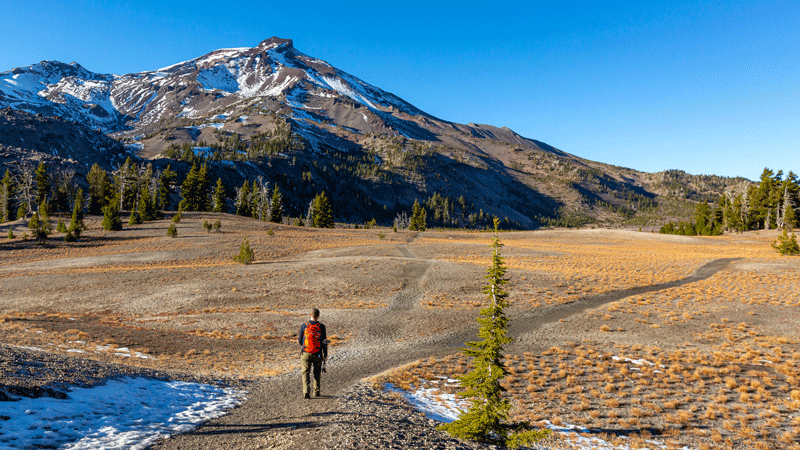
Many local stakeholders answer that question with a hopeful ‘yes.’ Conservation organizations, the outdoor industry and tourism marketing centers are partnering to instill regenerative principles into Central Oregon tourism. These new collaborations are creating ways for outdoor enthusiasts to give back as they play on the trails and rivers—and to leave Bend a better place because of their visit.
Regenerative travel as a concept is abuzz at the state level, with direction trickling down from the state tourism bureau, Travel Oregon, to regional entities including Visit Central Oregon and Visit Bend.
Visit Central Oregon’s efforts include support of the Deschutes Trails Coalition as it places professional trail crew members in the region to maintain trails for residents and visitors. VCO also promotes Travel Oregon’s “Take Care Out There” campaign, which spreads messages in line with regenerative tourism through videos and marketing. The organization has also partnered with The Environmental Center on a project encouraging tourists to rethink how they generate waste when traveling.
At Visit Bend, CEO Kevney Dugan and Sustainability Manager Serena Bishop-Gordon, are working to shift Visit Bend’s focus to include stewardship of natural areas impacted by tourism to promote regenerative travel. Today, their budget includes the Bend Sustainability Fund, a grant program that funds restoration projects.
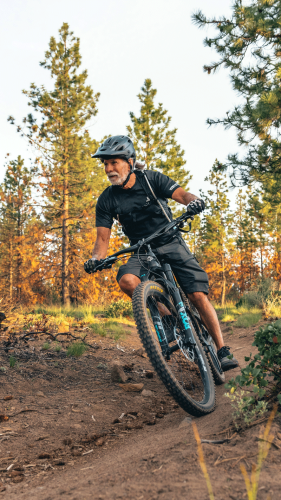
“Bend is unique in what draws visitors here. It’s not convention centers. It’s the mountains, rivers and trails—so that is where we should be investing,” Dugan said. “This fund lets us thank and support our partners driving the change toward healthy, robust ecosystems.”
In 2021, the Bend Sustainability Fund awarded $840,000 for eight projects ranging from trail building to riparian restorations to a nature playground at the High Desert Museum. Visitors can also donate to projects like these—especially after enjoying free access to hiking, biking and paddling trails that need regular upkeep. Visit Bend’s Pledge for the Wild program offers an easy way to give back.
Donations are important, but regenerative travel means shifting attitudes, according to Bishop-Gordon. “When people come to Bend, we want them to travel like they plan to return. That’s how we move the needle in the right direction,” she said. Their messaging guides visitors to “bring your best self” and the website lists volunteer opportunities to care for Bend like their own backyard.
Yet sometimes the best way to protect natural areas is simply to reduce the number of users.
At popular trailheads such as Green Lakes and Tam MacArthur Rim, peak-season crowds have changed the experience. Hikers left trash, widened trails and eroded creek banks, until the forests reached a tipping point. In 2021, the Forest Service established a permit reservation system for the Three Sisters, Mount Jefferson and Mount Washington wilderness areas. Reserved permits are required for day hikes leaving from the most popular trailheads and for all wilderness overnight stays.
“We often think of the outdoors as this infinite resource, until so many people in the same place at the same time limits the quality of the experience. People forget that everything they do on the trail affects other creatures in the forest—including the animals, plants, and even the water,” said Lisa Machnik, recreation staff officer for the Forest Service.
Almost 23,000 day-use permits and more than 40,000 overnight permits were issued during last year’s season; yet, adapting to the new system took time. “People felt frustrated with the need for permits until they saw photos of the damage and learned what that does to our water quality. We heard positive feedback about better trail conditions and more solitude with the permits,” said Jean Nelson-Dean, public affairs officer for the Forest Service.
Both Manchik and Nelson-Dean emphasize that the Forest Service can’t do it alone. Volunteers dig in for trail upkeep, especially through work parties organized by Discover Your Forest, a non-profit partner of the Forest Service. The business community pitches in too, like when REI donated trowels to be given away at trailheads (managing human waste on the trails is a significant problem).
Partnerships are also key for one of Bend’s newer conservation organizations: the Deschutes Trails Coalition. The coalition brings together agencies, organizations and the outdoor industry as resources for trail-related projects. Through their program $1 For Trails, participating resorts and businesses are able to collect $1 from their guests from the purchase of lift tickets, hotel accommodations and other items.
Jana Johnson, Deschutes Trails Coalition executive director, recognizes that sustainable trails bring more than environmental stability. “The economic benefit from trail tourism is substantial. Visitors support our lodging, restaurants, adventure guides—even our shoe stores. We are so lucky to have the capacity to make good work happen,” she said.
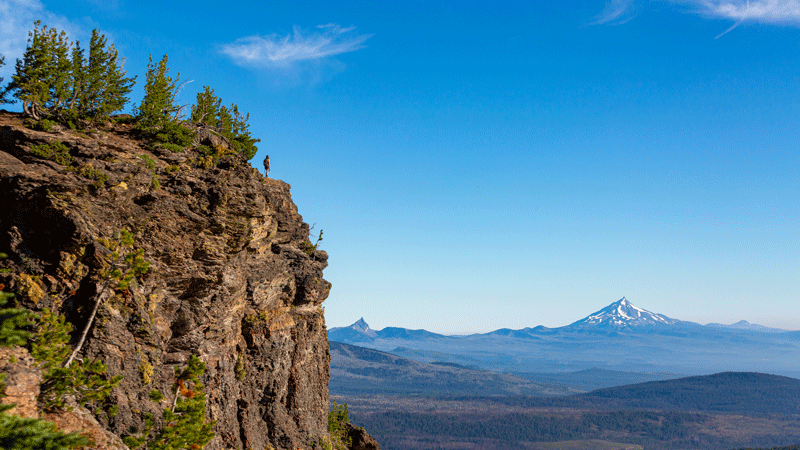
CONNECTING LAND AND PEOPLE
Bend’s signature network of flowy mountain biking trails grew over years of COTA-led volunteer work parties. Trail building remains COTA’s primary mission, but education is a close second—and etiquette stickers aren’t their only stewardship project.
This summer, COTA will partner with Cogwild and LOGE on a regenerative travel opportunity. Their “Ride & Dig” adventure package includes a day of trail work sandwiched between two days of riding with Cogwild, and LOGE Camp Bend offers a special rate for the package. See COTA’s Meetup events page for more work party opportunities.
Restoring edges and berms, clearing brush and fallen logs and smoothing ruts benefits the volunteer as well as the trail. As Andrews explained, “Working in the dirt connects people to the trails and to other trail-lovers in the community.”
Forging connections between people and land is also part of the mission for Wanderlust Tours, an adventure guide service in Bend. New owners Courtney Braun and Jared Garfield are integrating regenerative travel principles into the company’s legacy of volunteer cleanup days. Rather than viewing visitors as a drain on natural resources, Braun and Garfield see the potential good that visitors can contribute to Bend’s unique landscape if they are given the chance.
“On every outing, we inspire our guests to love this landscape. Because loving something means wanting to protect it. When we offer a way to participate in restoration, they gain a long-term connection,” Garfield said.
This fall, Wanderlust will partner with the Upper Deschutes Watershed Council and Hydroflask on a riparian restoration project at Ryan Meadow, a riverside area near Dillon Falls, southwest of Bend. Guests contribute with hands-in-the-soil work planting willows and wild roses to stabilize the riverbank. “That work creates emotional attachment to keep them coming back to check on their riverbank. Humans are wired that way,” Braun said.
Farther downstream, the impact of tourism on the river becomes more obvious. Most summer days, a fleet of orange tubes, kayaks and paddle boards float from the Old Mill to Drake Park. Regenerative travel is taking hold here too. Each tube rental fee managed by Tumalo Creek Kayak and Canoe contributes a dollar toward river restoration.
“We began this stewardship program with the UDWC last summer. By the end of the season, we collected over $30,000 for riparian work,” said Sue Fox, sales and events director at Tumalo Creek Kayak and Canoe.
Education is the key for protecting the river, according to Fox. Her three do-no-harm guidelines for river users? Bring nothing that can’t be attached to your tube (water bottles, dog balls and flipflops are notorious sources of trash). Use set access points instead of climbing across fragile riverbanks. Above all, keep in mind her mantra of “respect, protect, enjoy.”
“No one wants to do harm—people just need to learn the right practices,” said Fox.
MAKE TRAVEL MORE MEANINGFUL
How can every adventurer maximize their experience in nature while leaving it better than they found it? Rather than checking off the boxes on the list of must-do activities, follow these four principles of regenerative travel.
Know before you go.
On every outing, know your route and what you’ll need. Pack water, a first aid kit, trowel, map and a warm layer. Check where campfires are permitted and understand how to put them out. Last but not least, learn about the Cascade ecosystems to recognize what makes this landscape special.
Follow good trail etiquette.
Smile and say hello to other hikers and bikers; slow down and respect the right of way—especially for uphill bikers. Stay on established trails—trampling delicate plant life is not worth that perfect photo.
Find the local flavor.
The heart of Central Oregon’s economy beats strongest at our unique gear shops, food carts, boutiques and pubs. Fill up on local flavor while supporting the families behind the businesses.
Give back and pitch in!
Trail maintenance relies on volunteers and a shoestring budget. If you enjoyed using the trails, check out ways to give back with sweat equity. Can’t make time to join a work party? Pitch in through a donation to your favorite conservation organization.
Click to read more Central Oregon Adventure stories with us.


